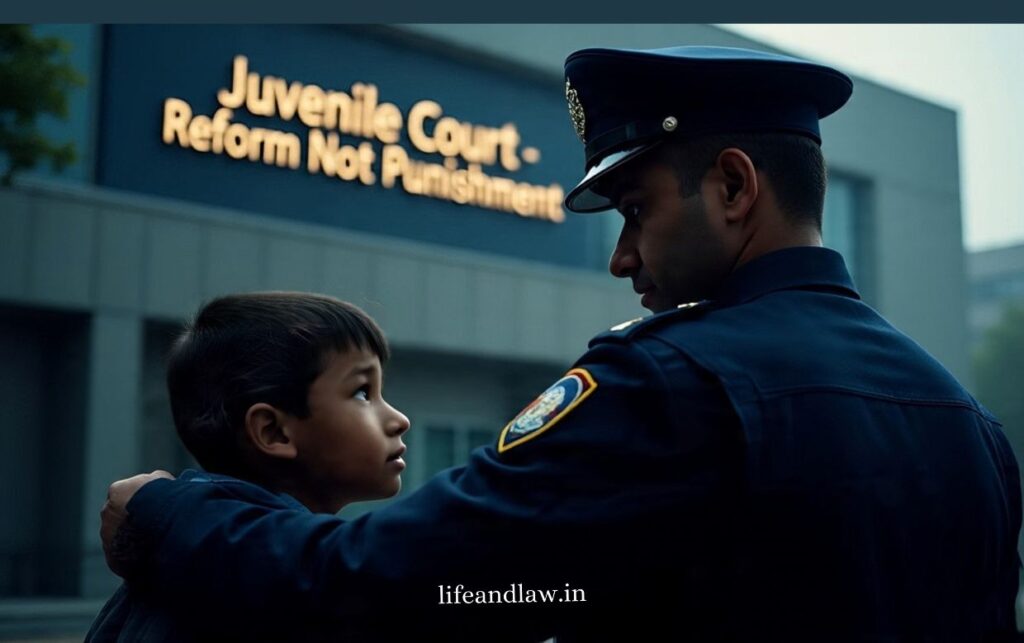Trending

Every now and again, news appears about youngsters or teenagers participating in criminal activities, ranging from simple thievery to more serious crimes. These occurrences frequently raise the topic of whether young offenders should face the same punishment as adults. Are they actually aware of the implications of their actions?
This article will look at how the legal system treats young offenders differently from adults, and why that distinction is important. We’ll look at the motivations for juvenile crimes, the concept of criminal responsibility, and how the judicial system prioritises rehabilitation over punishment. Understanding these factors allows us to view the big picture, which balances accountability with the notion that young people may change and deserve another chance.
Children rarely wake up one day and decide to commit crimes. Juvenile offences are typically the result of deeper underlying difficulties in their environment or upbringing. Many young criminals came from damaged households, were neglected, or grew up in poverty. Others may be swayed by peer pressure, lack strong role models, or suffer from untreated mental health disorders.
In some situations, the crime may be impulsive—committed without fully comprehending the repercussions. Children may lack the feeling of good and wrong that adults possess, as well as the maturity to consider long-term. This is why the legal system looks at not only what they did, but also why they did it.
Most legal systems define a “young offender” as someone under the age of 18. However, the age of criminal responsibility, or the minimum age at which a child can be lawfully prosecuted with a crime, differs between countries. Some regions limit it to 10 years old, while others put it at 14 or higher.
There are also distinct restrictions for different age groups. For example, a 12-year-old is significantly less likely to be arrested than a 17-year-old. In serious circumstances, older minors may be tried as adults, particularly if the crime involved violence or weapons. Prior to reaching such decisions, the court takes into account issues such as intent, mental competence, and the nature of the offence.
Unlike adult criminal courts, the juvenile justice system prioritises rehabilitation above punishment. This system operates through separate courts, detention facilities, and procedures for kids. Many countries keep the proceedings confidential to safeguard the child’s identity and future possibilities. Young offenders may receive:
Counselling or Therapy
Community Service
Probation
Placement in juvenile correctional facilities (Used as a Last Resort)
Social workers, psychologists, and probation officials are frequently involved in developing a plan to help the youngster comprehend their actions and chart a course forward. The goal is not only to punish, but also to guide them back into becoming responsible members of society.
Not all juvenile situations are handled with leniency. When a young person commits a violent crime—such as armed robbery, sexual assault, or murder—the court system may take a harsher approach. Depending on the country or state, the offenders may be tried as adults.
These are complicated and divisive judgements. On the one hand, society expects accountability for serious offences. On the other hand, many say that a child’s brain is still maturing, and they may not completely understand the ramifications of their decisions.
Courts frequently consider numerous factors:
The minor’s age and maturity
The gravity and circumstances of the offence
Previous criminal record, if any
Possible rehabilitation
The concept of second chances is central to juvenile justice. Research indicates that strong punishment alone does not reduce reoffending. Instead, programs that emphasise personal development, education, and emotional support are more successful.
Rehabilitation may include:
Educational programs (completing schoolwork or learning skills)
Mental Health Counselling
Substance Abuse Treatment
Mentorship programs
Family Intervention Services
Success tales abound, with young people who stole or got into fights turning their lives around, attending college, and becoming mentors themselves. These outcomes serve as a reminder that change is not only possible, but also likely, given the correct support.
When a child defies the law, it affects not only the individual but also the social and systemic influences that surround them. The juvenile justice system exists not just to safeguard public safety, but also to identify and foster each young person’s potential for change. Instead of simply asking “How should we punish?”, it also enquires “What went wrong, and how can we make it right?”
According to Adv. Abdul Mulla, a legal practitioner and founder of www.asmlegalservices and www.lifeandlaw.in, knowing how the law treats young offenders is critical for creating a just and compassionate society. By emphasising rehabilitation over punishment, we provide young people the tools they need to flourish, ultimately contributing to safer, healthier communities for everyone.
Adv. Abdul Mulla (Mob. No. 937 007 2022) is a seasoned legal professional with over 18 years of experience in advocacy, specializing in diverse areas of law, including Real Estate and Property Law, Matrimonial and Divorce Matters, Litigation and Dispute Resolution, and Will and Succession Planning. read more….
Copyright BlazeThemes. 2025